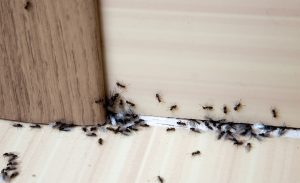Ticks are pesky little critters that can quickly turn a pleasant outdoor adventure into an itchy, uncomfortable experience. As summer rolls on and outdoor activities become more frequent, it’s essential to be prepared to deal with ticks effectively. In this blog post, we’ll explore some tips for safe and efficient tick removal to keep you and your loved ones tick-free all season long.
Understanding Ticks: The Basics
Before we dive into tick removal techniques, let’s take a moment to understand these tiny pests and why they can be a cause for concern. Ticks are small arachnids that feed on the blood of mammals, birds, and sometimes reptiles and amphibians. They are commonly found in wooded areas, tall grasses, and brushy areas, where they wait patiently for a host to pass by.
Ticks can transmit diseases such as Lyme disease, Rocky Mountain spotted fever, and babesiosis through their bites. Prompt removal of ticks is crucial to reduce the risk of disease transmission and prevent further complications.
Tick Removal Techniques
When it comes to removing ticks, there are several techniques you can use. Here are some tips to help you remove ticks safely and effectively:
- Use Fine-Tipped Tweezers: The best tool for tick removal is a pair of fine-tipped tweezers. Grasp the tick as close to the skin’s surface as possible and pull upward with steady, even pressure. Avoid twisting or jerking the tick, as this can cause the mouthparts to break off and remain in the skin.
- Pull Straight Up: Pull the tick straight up and away from the skin in a slow, steady motion. Be patient and gentle, ensuring that you remove the entire tick, including its mouthparts. Do not squeeze or crush the tick’s body, as this can cause it to release more saliva and increase the risk of disease transmission.
- Clean the Area: After removing the tick, clean the bite area and your hands with soap and water or rubbing alcohol. Dispose of the tick by flushing it down the toilet or placing it in a sealed container. Avoid crushing the tick with your fingers, as this can release its disease-causing pathogens.
- Monitor for Symptoms: Keep an eye on the bite site for any signs of infection or illness, such as redness, swelling, or a rash. If you develop symptoms such as fever, headache, fatigue, or muscle aches, contact your healthcare provider immediately.
Preventing Tick Bites
While tick removal is essential, prevention is the best defense against tick-borne illnesses. Here are some tips to help reduce your risk of tick bites:
- Wear Protective Clothing: When spending time outdoors, especially in wooded or grassy areas, wear long sleeves, pants, and closed-toe shoes to minimize skin exposure.
- Use Insect Repellent: Apply an insect repellent containing DEET or permethrin to exposed skin and clothing to repel ticks and other biting insects.
- Check for Ticks: Perform regular tick checks on yourself, your children, and your pets after spending time outdoors. Pay close attention to areas such as the scalp, neck, armpits, groin, and behind the ears.
- Create Tick-Safe Zones: Keep grassy areas well-maintained and remove leaf litter, brush, and other tick habitats from your yard to create tick-safe zones.
Call Innovative Pest Management for Expert Assistance
If you’re dealing with a tick infestation on your property or need assistance with tick control, don’t hesitate to contact the experts at Innovative Pest Management. Our team of experienced pest control professionals can assess your situation, develop a customized treatment plan, and help you eliminate ticks from your home and yard.
Dealing with ticks can be a nuisance, but with the right techniques and preventive measures, you can minimize your risk of tick bites and tick-borne illnesses. Remember to use fine-tipped tweezers for tick removal, clean the bite area thoroughly, and monitor for any signs of infection or illness. By following these tips and seeking assistance from pest control professionals when needed, you can enjoy the great outdoors without the worry of tick troubles.




